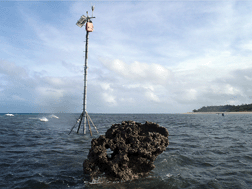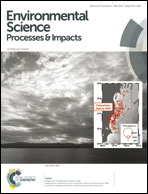The use of climatologies and Bayesian models to link observations to outcomes; an example from the Torres Strait
Abstract
After widespread coral bleaching in the Torres Strait in 2009–2010 a monitoring program was established under the National Environmental Research Program and run by the Torres Strait Regional Authority to identify ocean conditions that may lead to future bleaching. One component of this program was a real time ocean monitoring station located between Thursday and Horn Islands in the south-western part of the Torres Strait. A key outcome of the project was to make the scientific data and knowledge available to the local communities in a form that they could engage with and with which they could act to instigate outcomes relevant to their needs. The project developed climatologies to give context to the temperature data allowing for historical limits to define the significance of the real time data as related to the longer term mean. This allowed the identification of ‘normal’, ‘significant’ and ‘extreme’ temperature events which could be linked into appropriate responses. Bayesian models were used to encapsulate the current scientific knowledge about the drivers and responses involved in coral bleaching. These models were used to convert the environmental parameters to an output index reflecting the current and future likelihood of coral bleaching occurring. Two web sites were used to integrate the real time data, climatology data and the bleaching indices generated from the Bayesian models. The first was a more technical site developed for the local environmental managers within the Torres Strait Regional Authority, the second was targeted at the general public with a display located within the local radio station and broadcast on a daily basis. Engagement with the project has been high to the point where additional monitoring stations and data display kiosks are to be installed in the near future. The combination of climatologies to give context and conceptual models to embody system knowledge has allowed the project to go from delivering simple measurements to being able to deliver knowledge about the system in a format that engages the local community and that can be used to facilitate environmental management outcomes.


 Please wait while we load your content...
Please wait while we load your content...